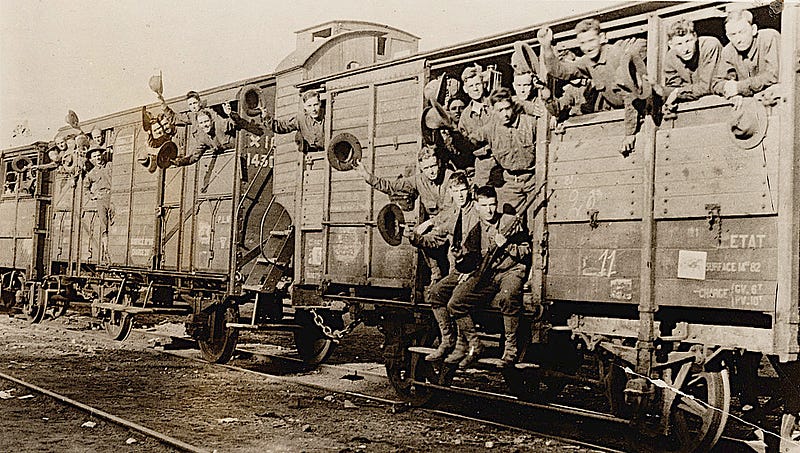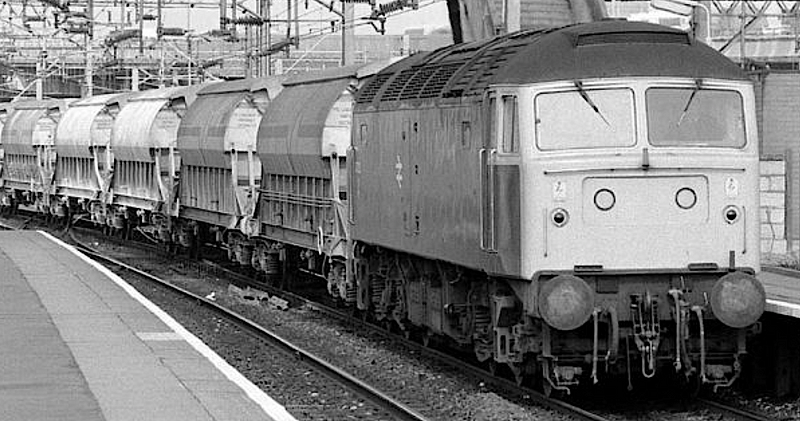The Silent Backbone: How Railroads Shaped American Warfare
Written on
Chapter 1: The Foundational Role of Railroads
The narrative of America is deeply intertwined with its railroads. Long before cars revolutionized travel in the 1950s, trains were vital in expanding westward and linking distant cities. They were especially crucial for transporting troops and supplies during three significant conflicts: the Civil War, World War I, and World War II. Furthermore, during the Cold War, railroads served a clandestine purpose in national security.
Section 1.1: Railroads in the Civil War
The significance of railroads in the Union's triumph over the Confederacy during the Civil War cannot be overstated. The North's rail infrastructure was superior, engineered to support its industrial economy. In contrast, the South, primarily agrarian, relied less on rail transport. Major Civil War battles frequently occurred near rail lines, facilitating the movement of soldiers, equipment, and even the injured to medical care.
The Union's extensive rail network provided a strategic edge with over double the mileage compared to the Confederacy. General William Sherman noted that the success of his Atlanta campaign hinged on these railroads, emphasizing their importance in logistics. His infamous march through Georgia further damaged the Southern rail system, crippling its war efforts.
Subsection 1.1.1: Visualizing the Impact

Section 1.2: The Government Takes Control in World War I
By the time the United States joined World War I in April 1917, the nation’s railroads were struggling financially. Rising maintenance costs and labor disputes hindered profitability. President Woodrow Wilson recognized the urgent need for a robust rail system to support military logistics. Consequently, on December 26, 1917, he nationalized the railroads, creating distinct divisions and investing heavily in new equipment. Private control was restored in 1920.
American railroads also adopted innovative strategies during the war. At Camp Humphreys, Virginia, soldiers were trained to use diminutive locomotives on narrow-gauge tracks. These compact trains were instrumental in transporting troops and munitions in Europe, allowing for swift movement to the front lines.
Chapter 2: Railroads During World War II
Section 2.1: A Vital Transport Network
World War II saw a significant surge in railroad activity, with trains moving nearly 44 million troops between 1941 and 1945. During 1942 to 1944, trains were responsible for transporting 98% of military personnel and over 90% of military freight. Railroads also catered to civilian travel needs, requiring a careful balance of resources.
The Military Railway Service (MRS), managed by the Army Corps of Engineers, played a crucial role in maintaining military railways. MRS battalions constructed and managed railways both domestically and abroad, facilitating logistics in key theaters such as North Africa, where over 1,900 miles of railway were operated.
Section 2.2: The Cold War’s Secret Transport

Beginning in the early 1950s, the Cold War introduced a new chapter in railroad history. With the U.S. nuclear arsenal expanding, specially designed "white trains" were created to transport nuclear weapons. These armored trains, painted white for discretion, operated with armed guards and served for nearly three decades, moving bombs to secure locations across the country.
However, increasing protests against nuclear proliferation in the 1980s brought unwanted attention to these trains. Despite repainting them, by 1987, the white trains were deemed insecure and eventually retired, with any remaining units now displayed in museums.
Chapter 3: Conclusion
The evolution of railroads in America reflects their indispensable role in wartime logistics, from the Civil War through the Cold War. Their impact on military strategy and national security remains a critical aspect of American history.
